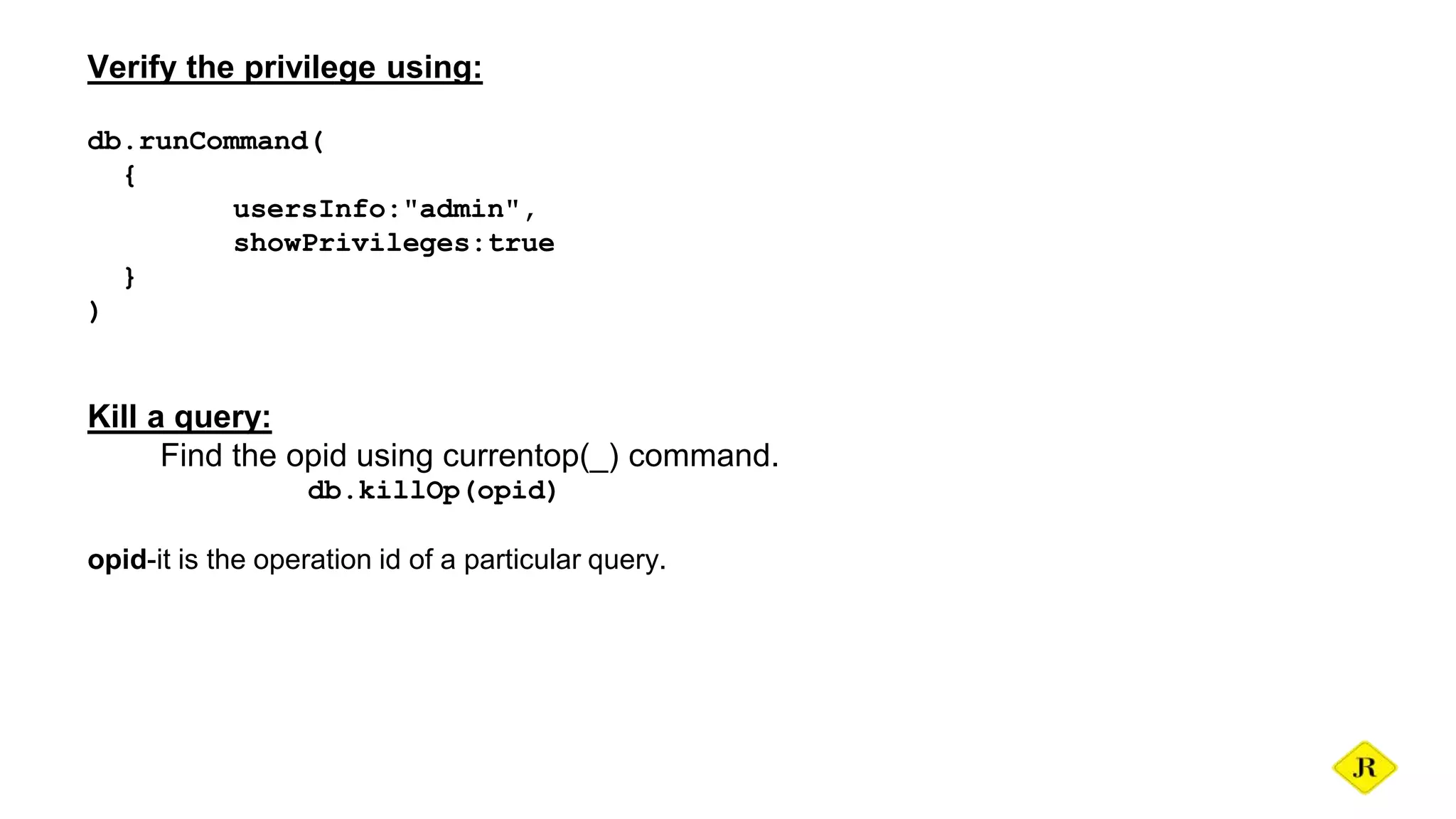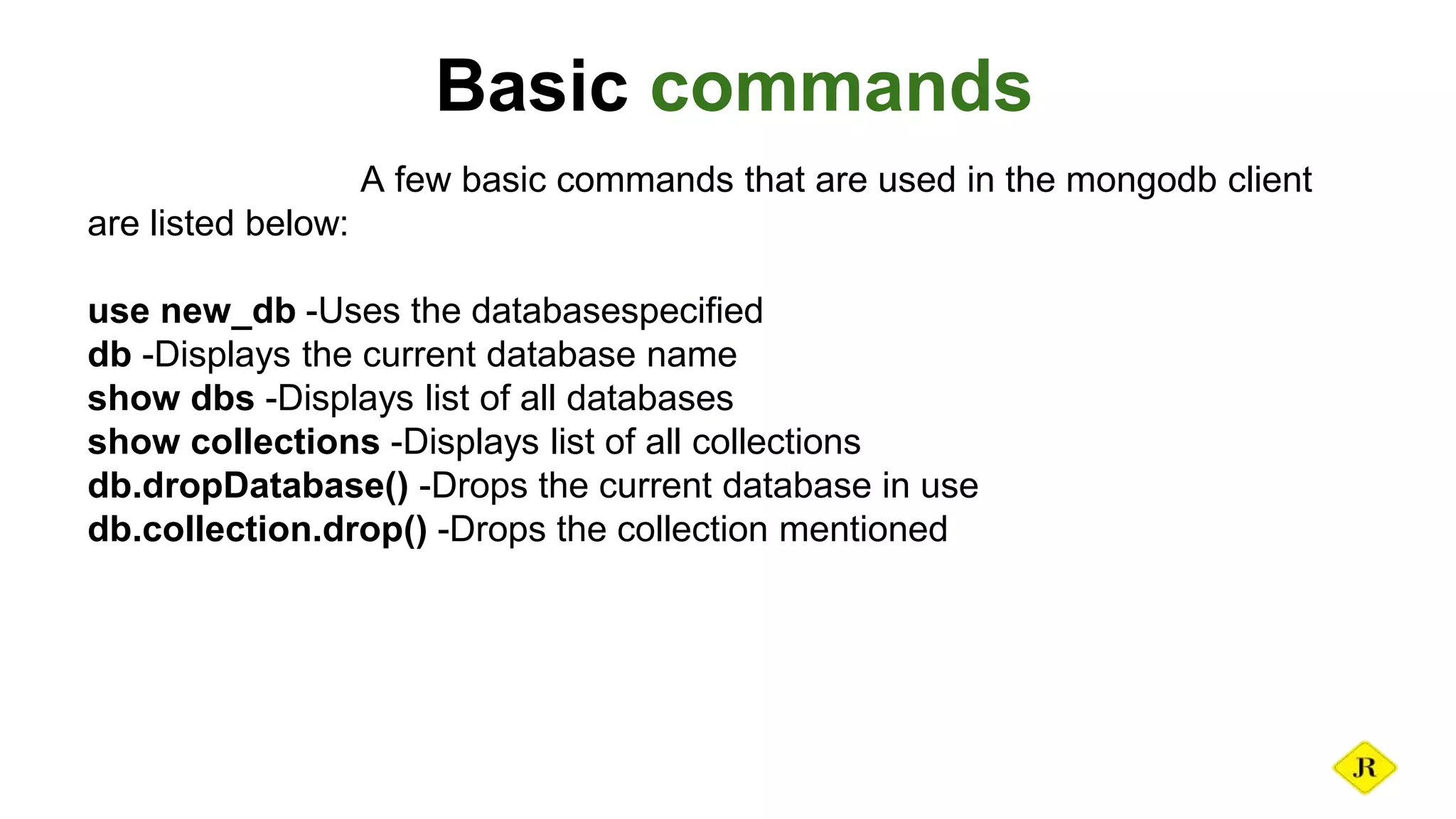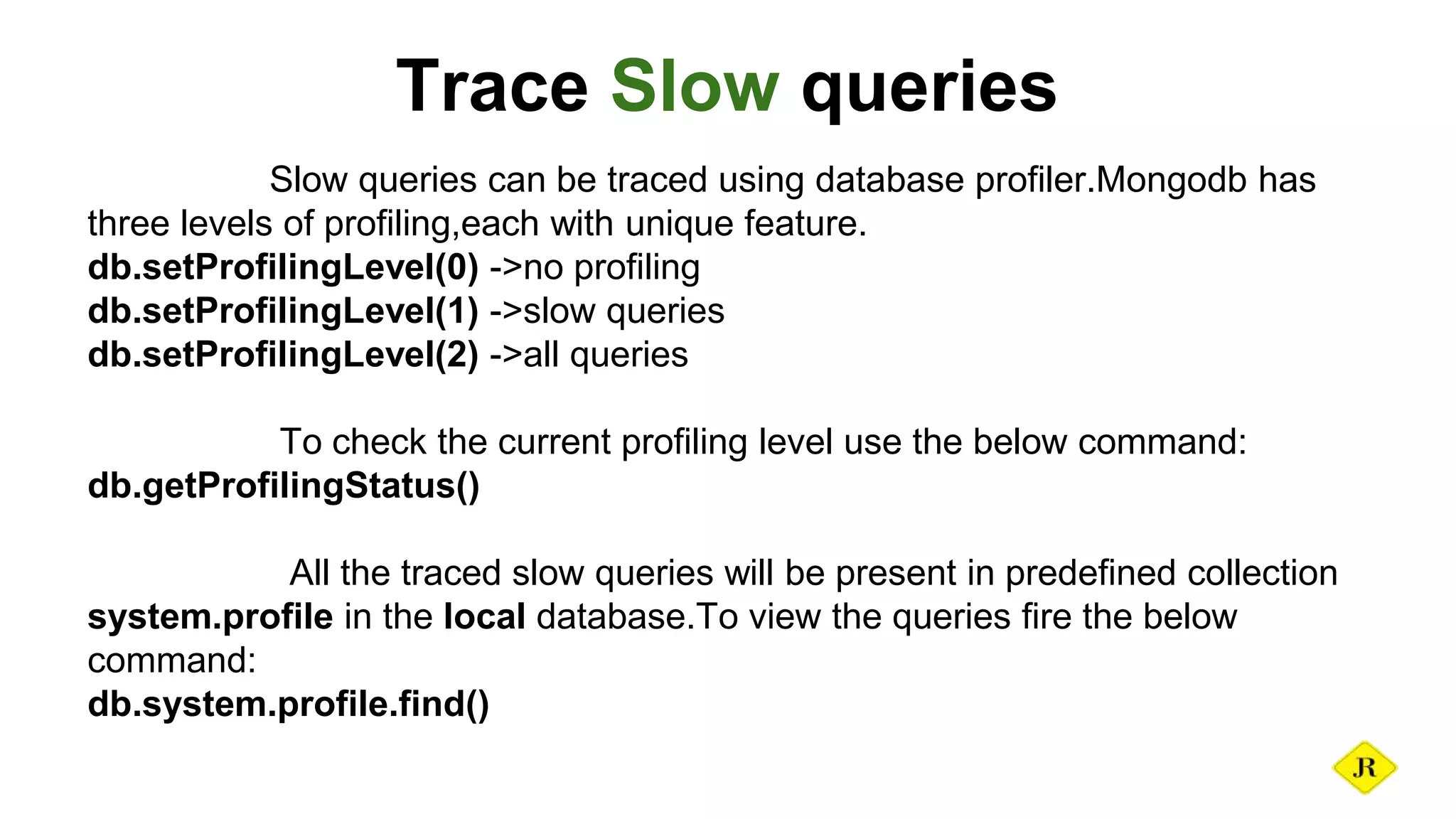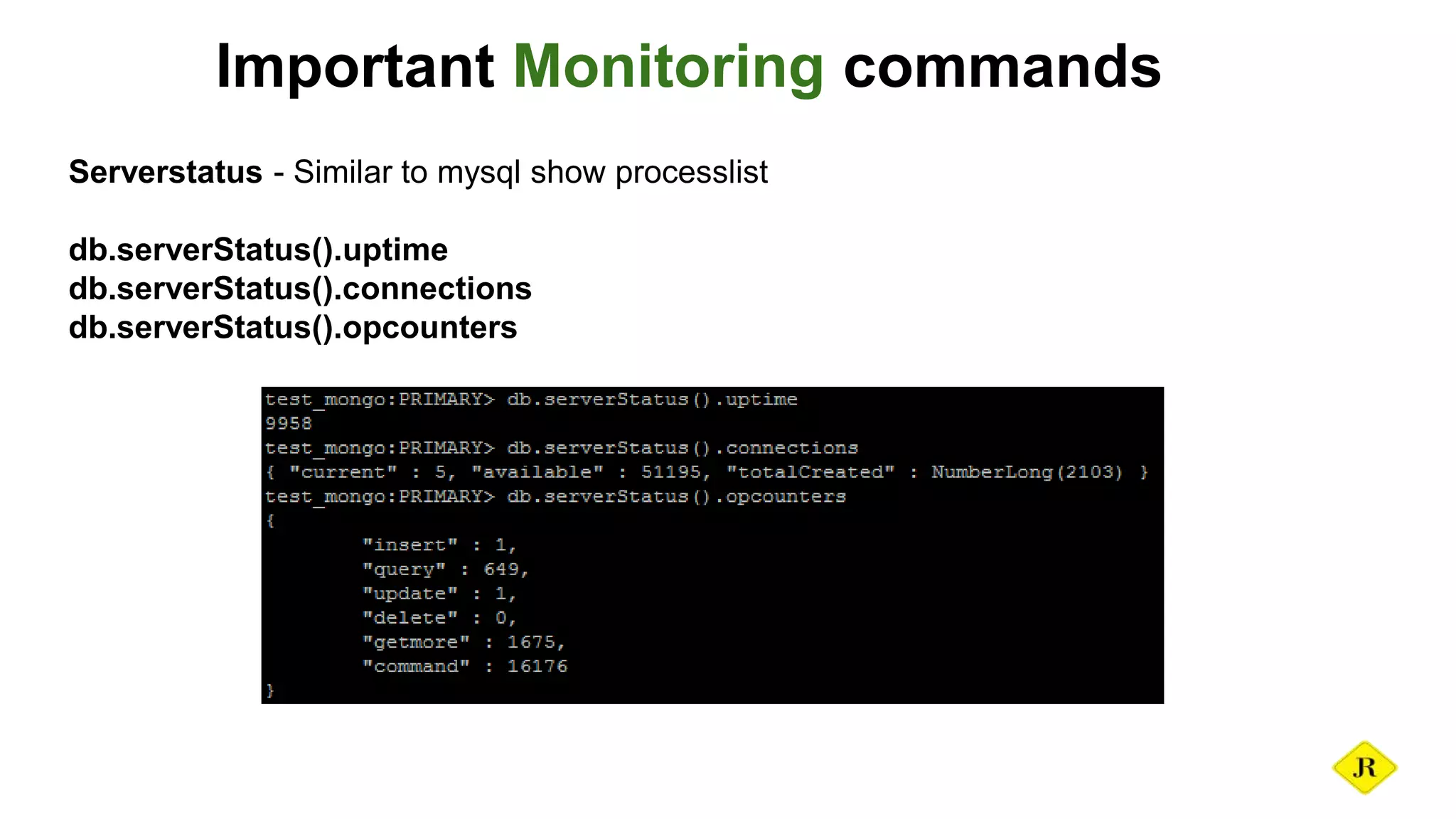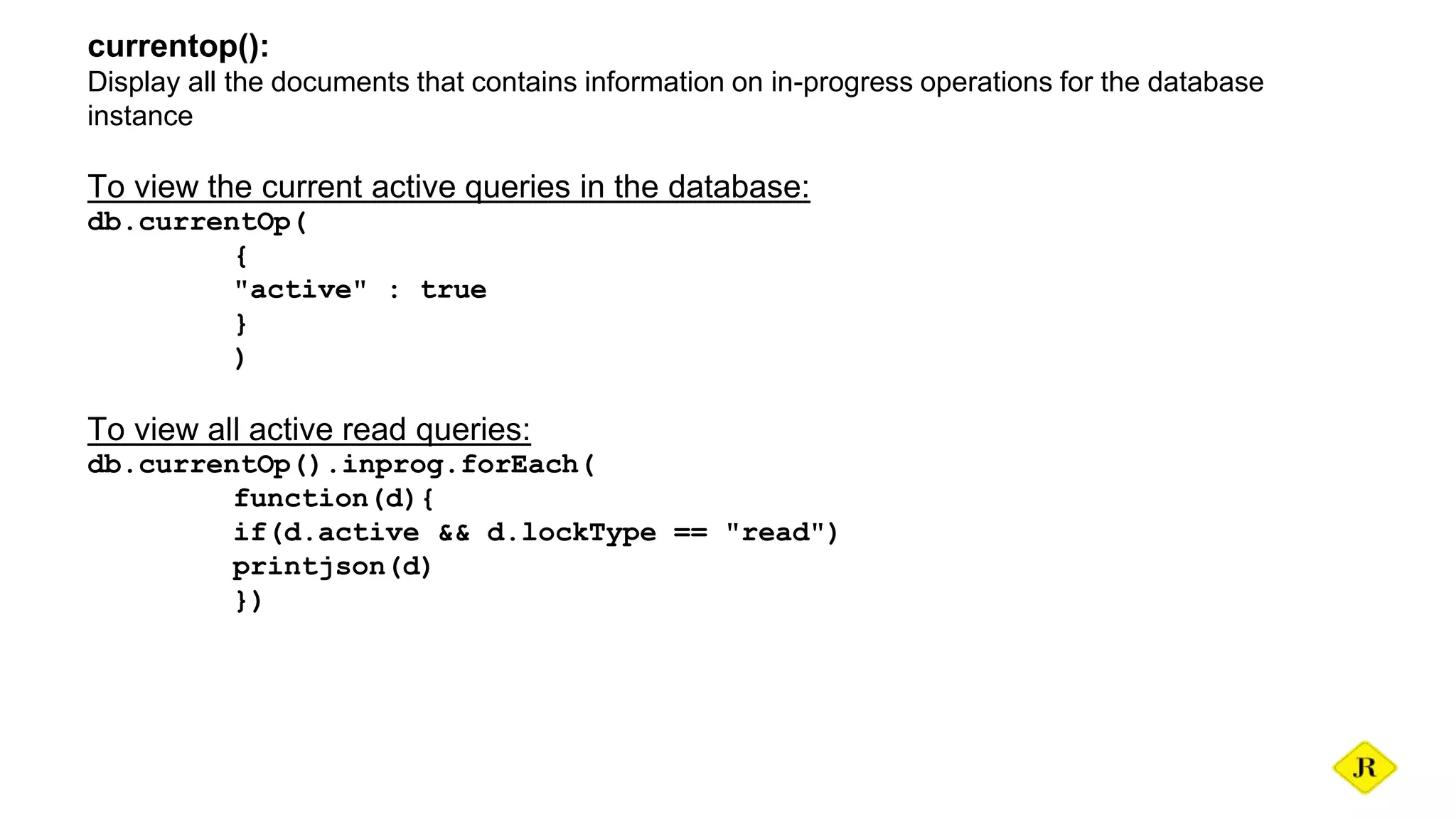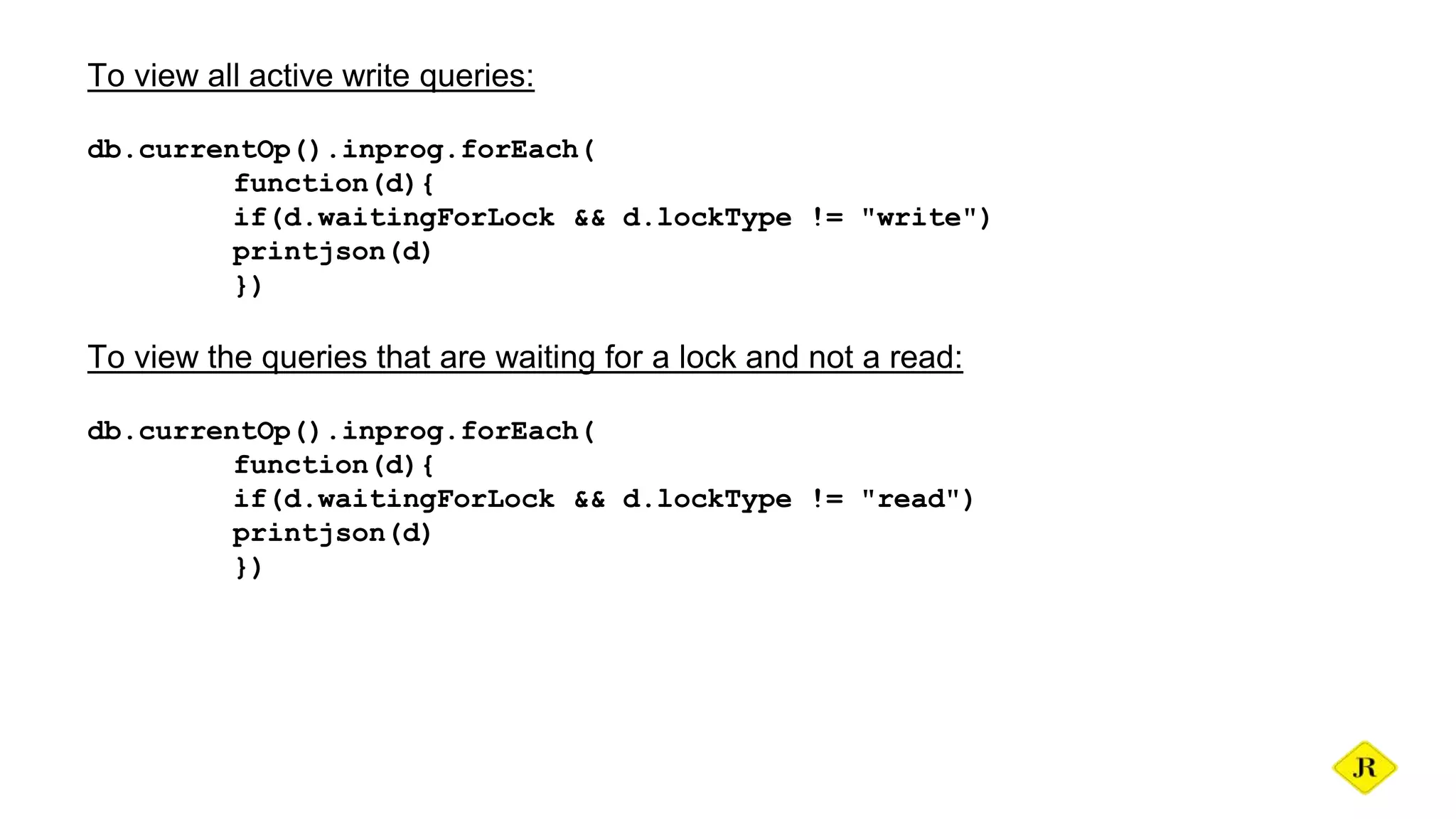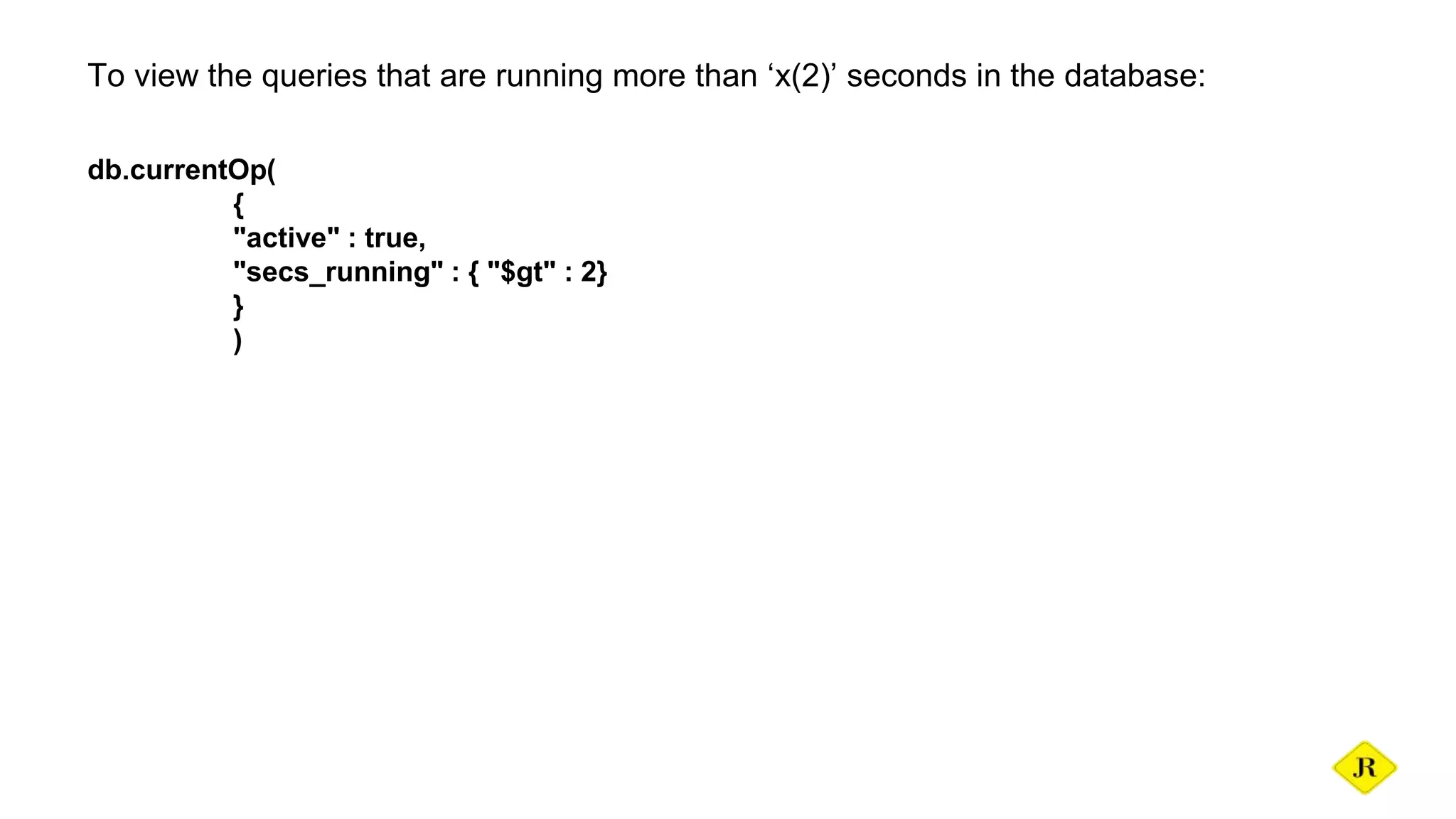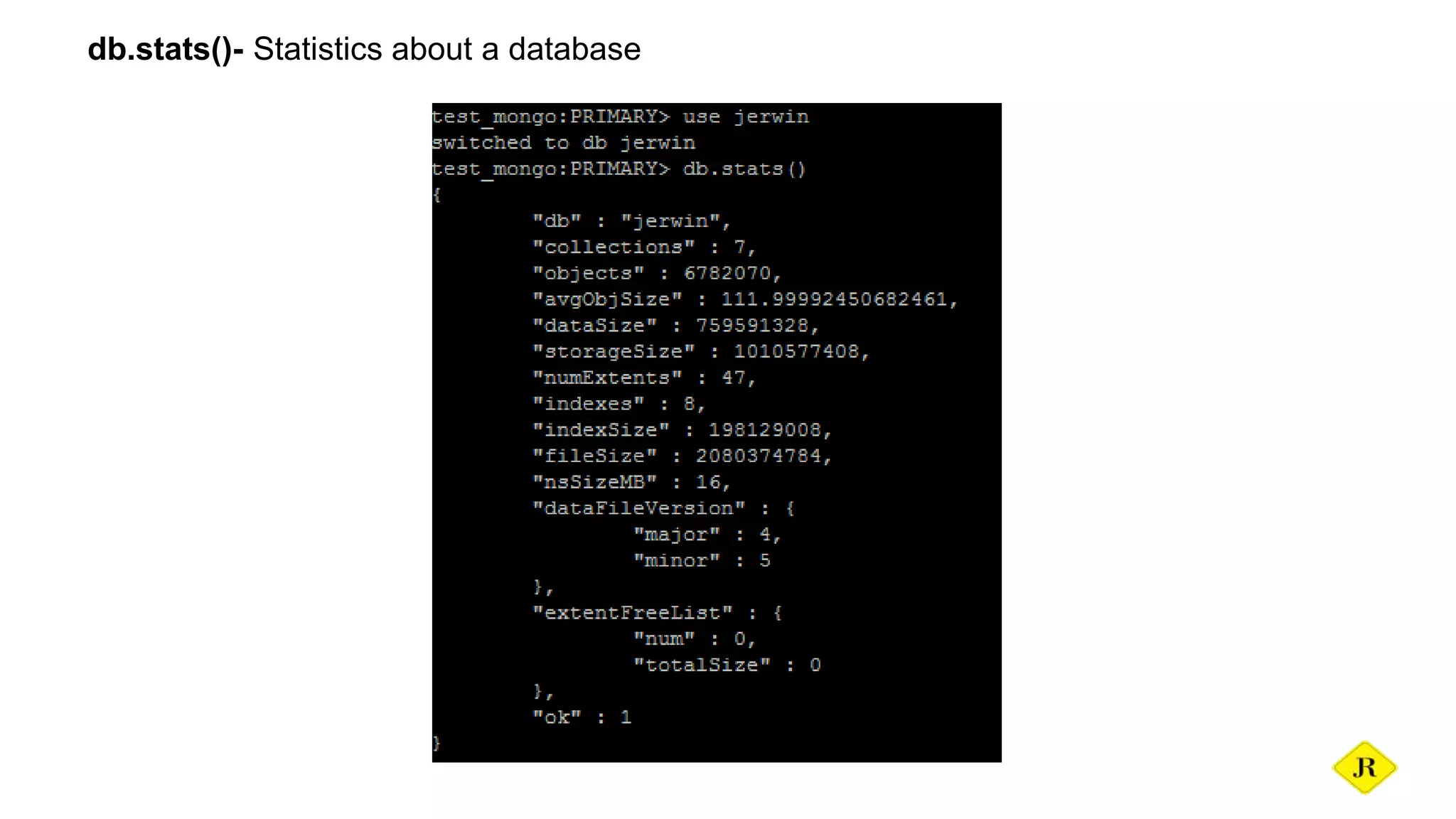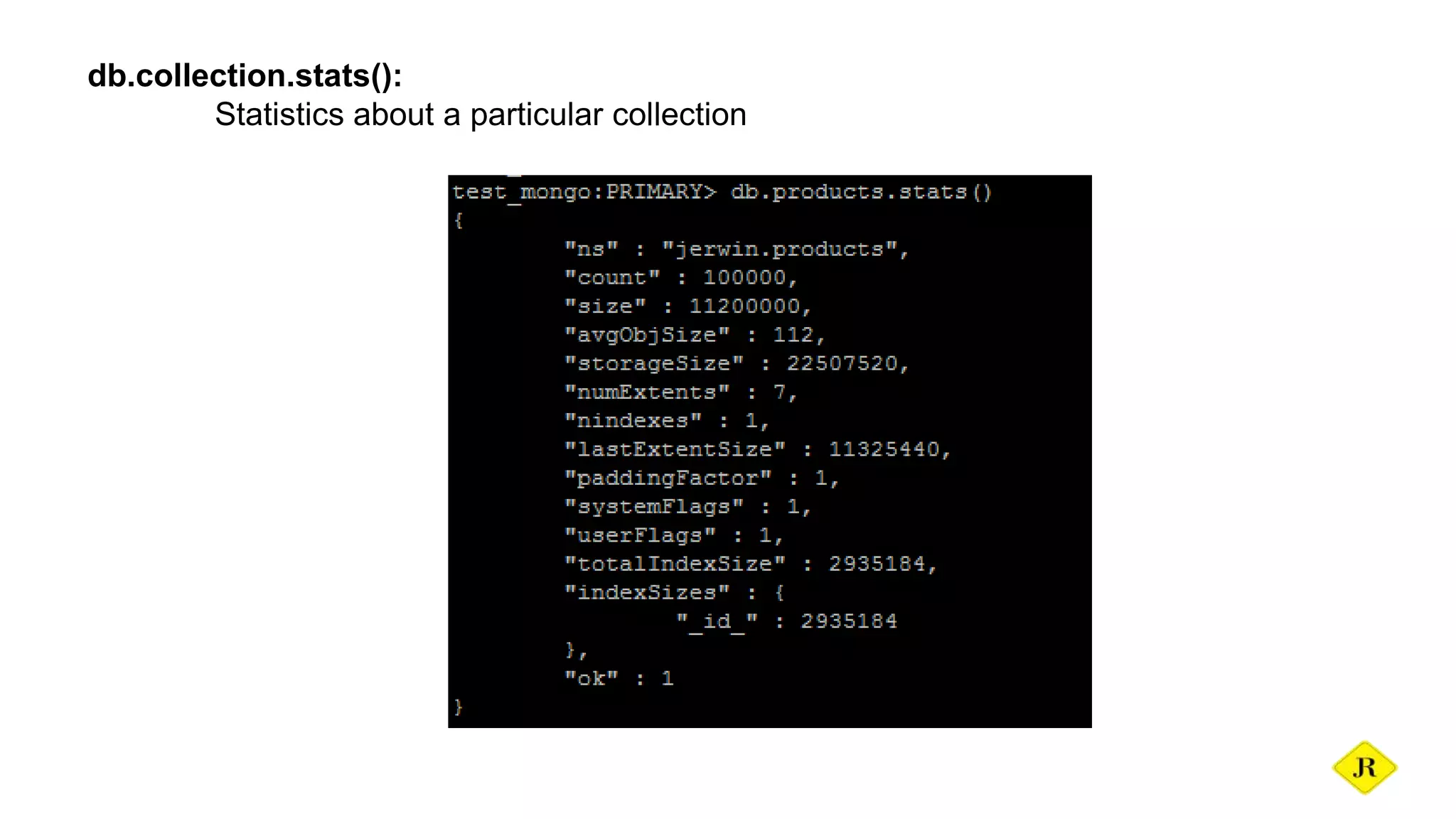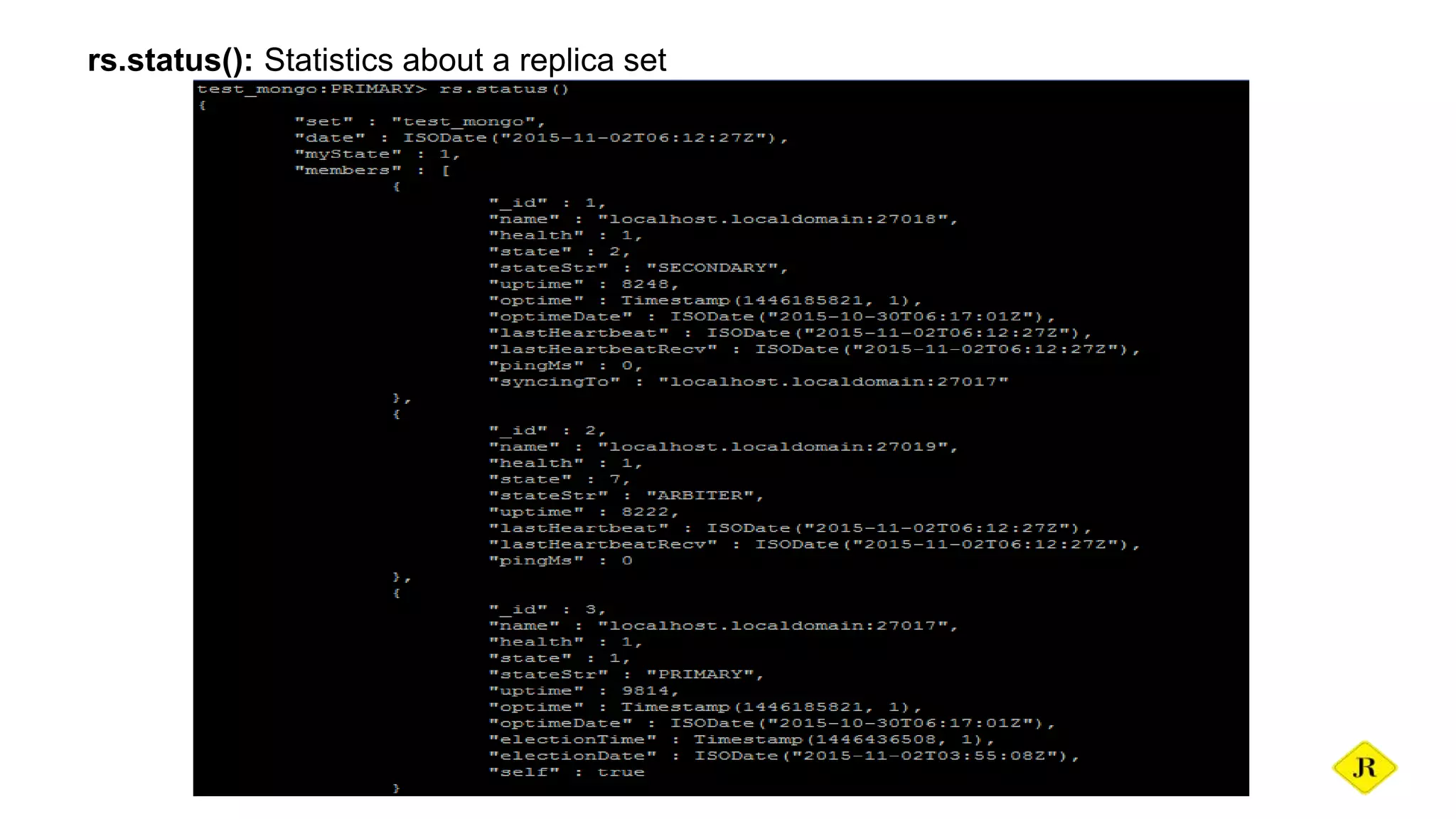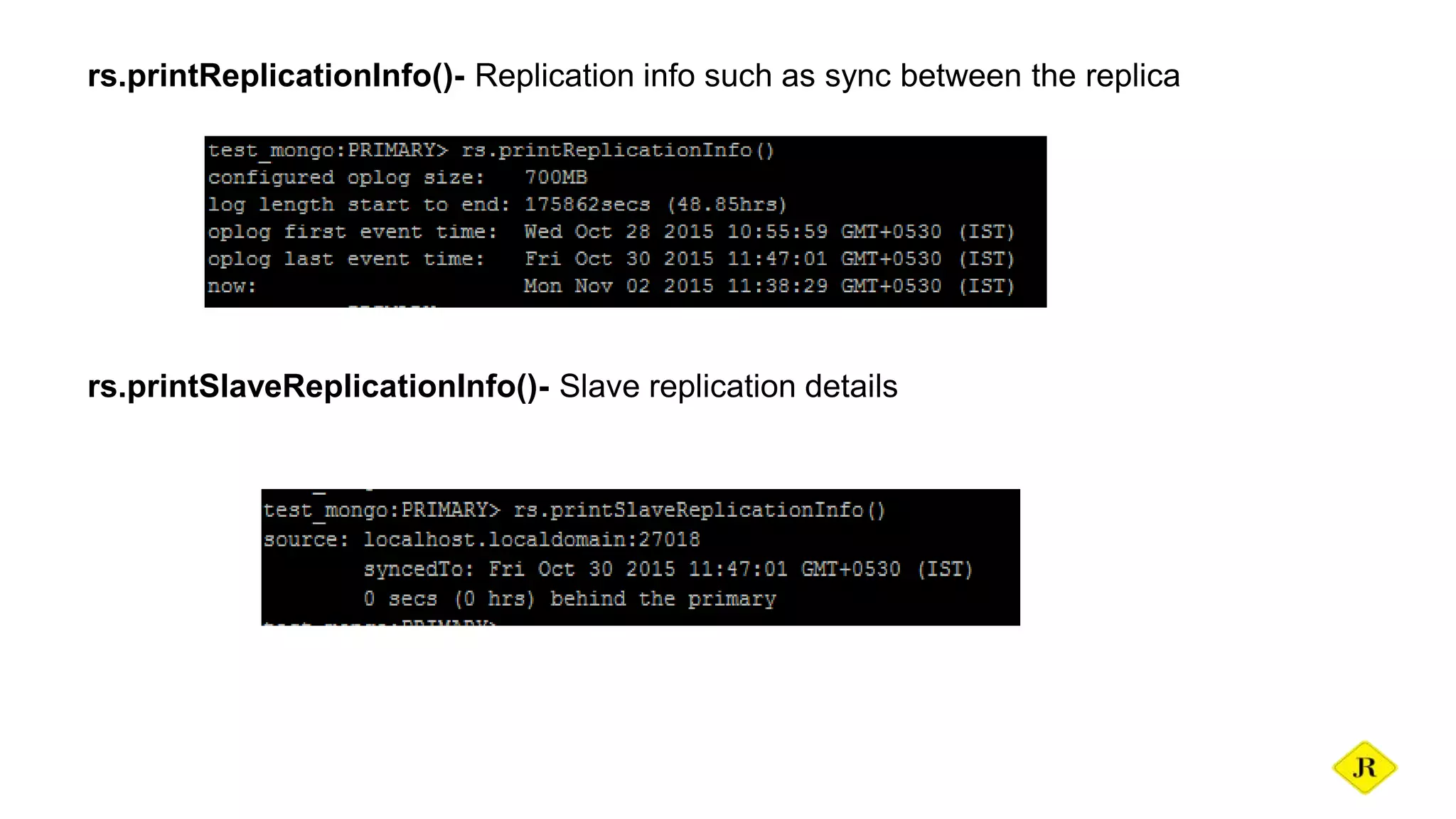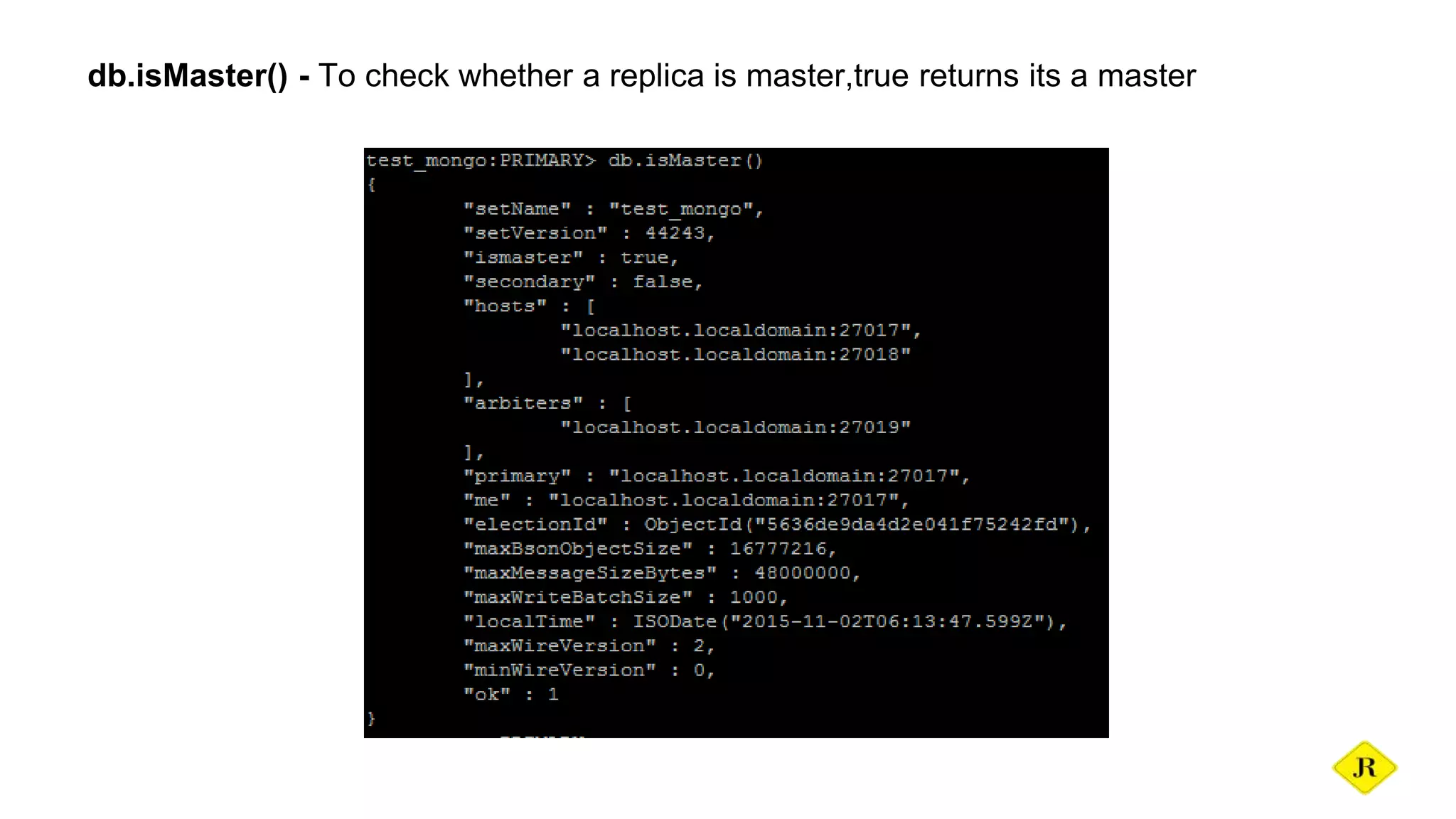This document provides an overview and introduction to MongoDB including: - MongoDB installation using yum or binary, roles in MongoDB, and how to create users - Basic MongoDB commands like use, show dbs, and dropDatabase - Tracing slow queries using the database profiler and viewing results in the system.profile collection - Important monitoring commands like db.serverStatus(), currentOp(), db.stats(), and replica set commands like rs.status() and rs.printReplicationInfo()
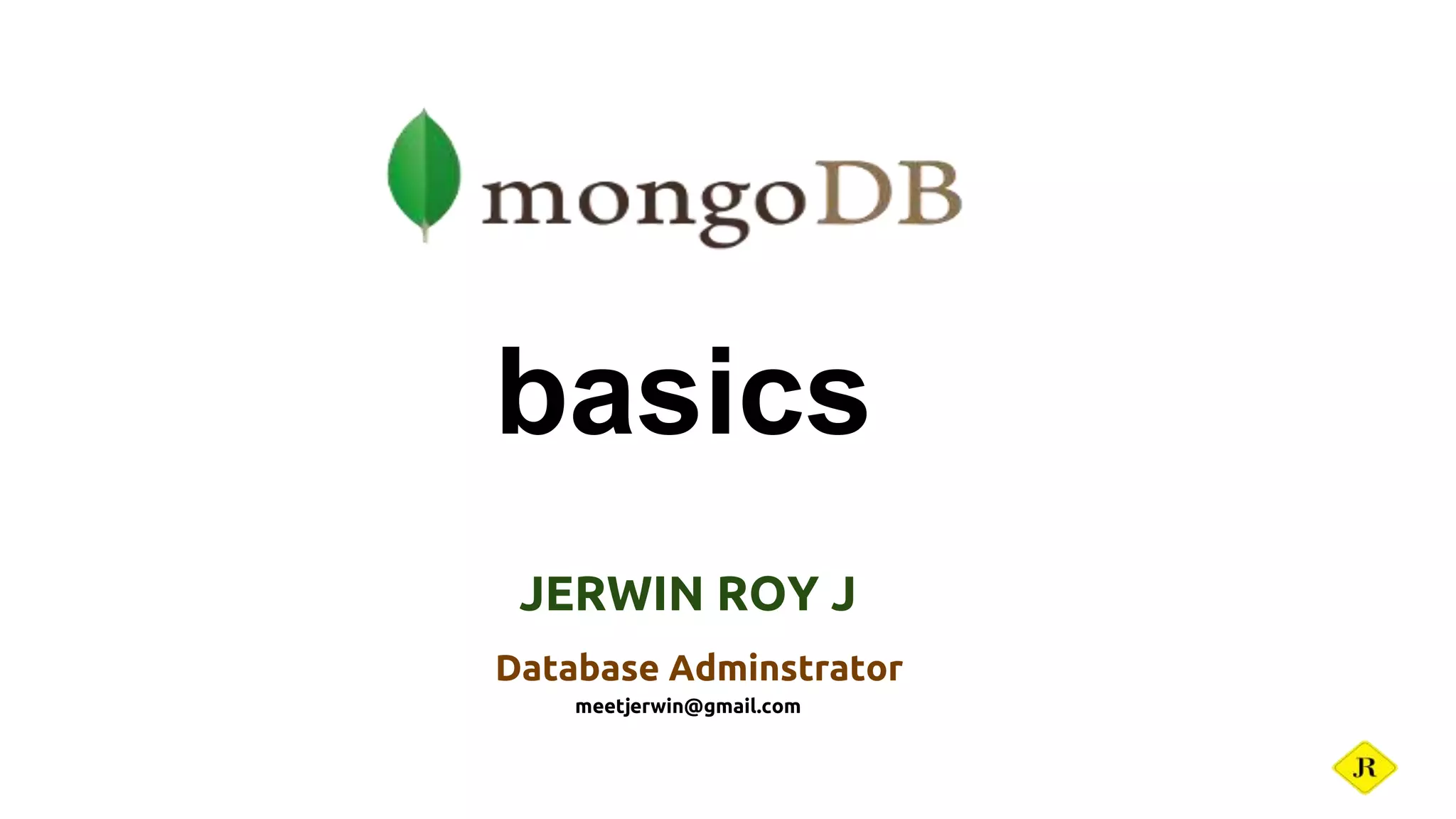
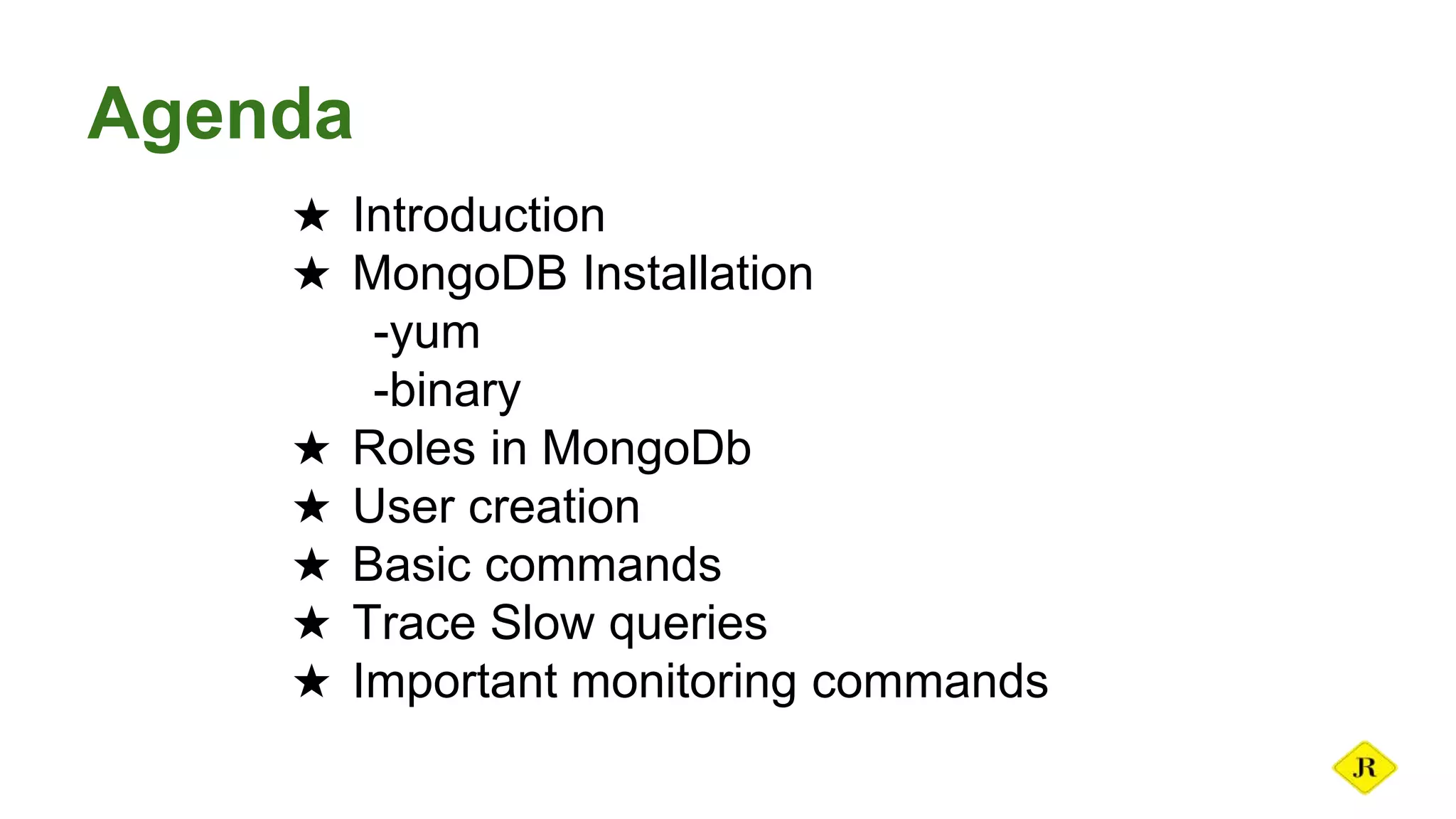
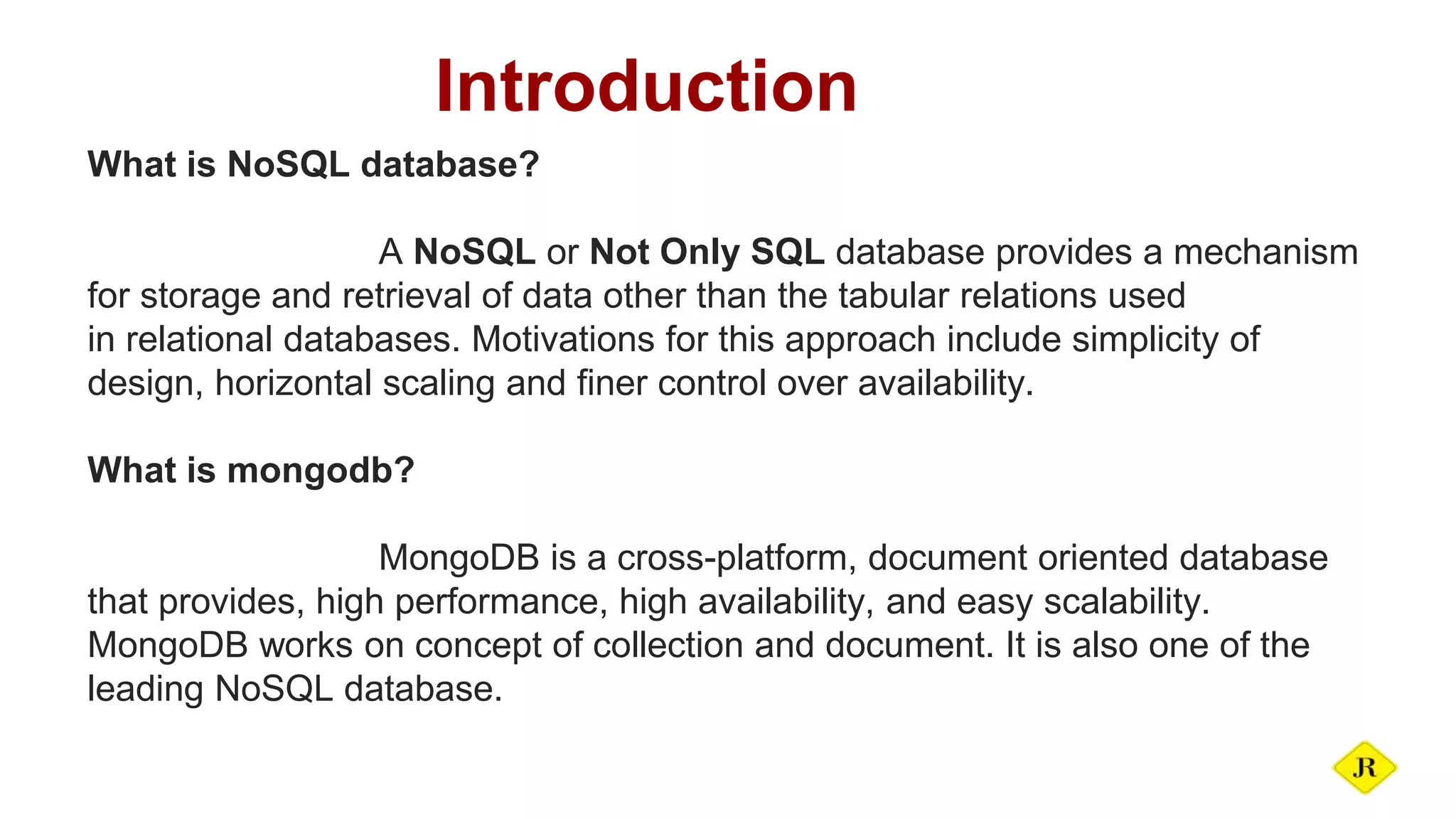
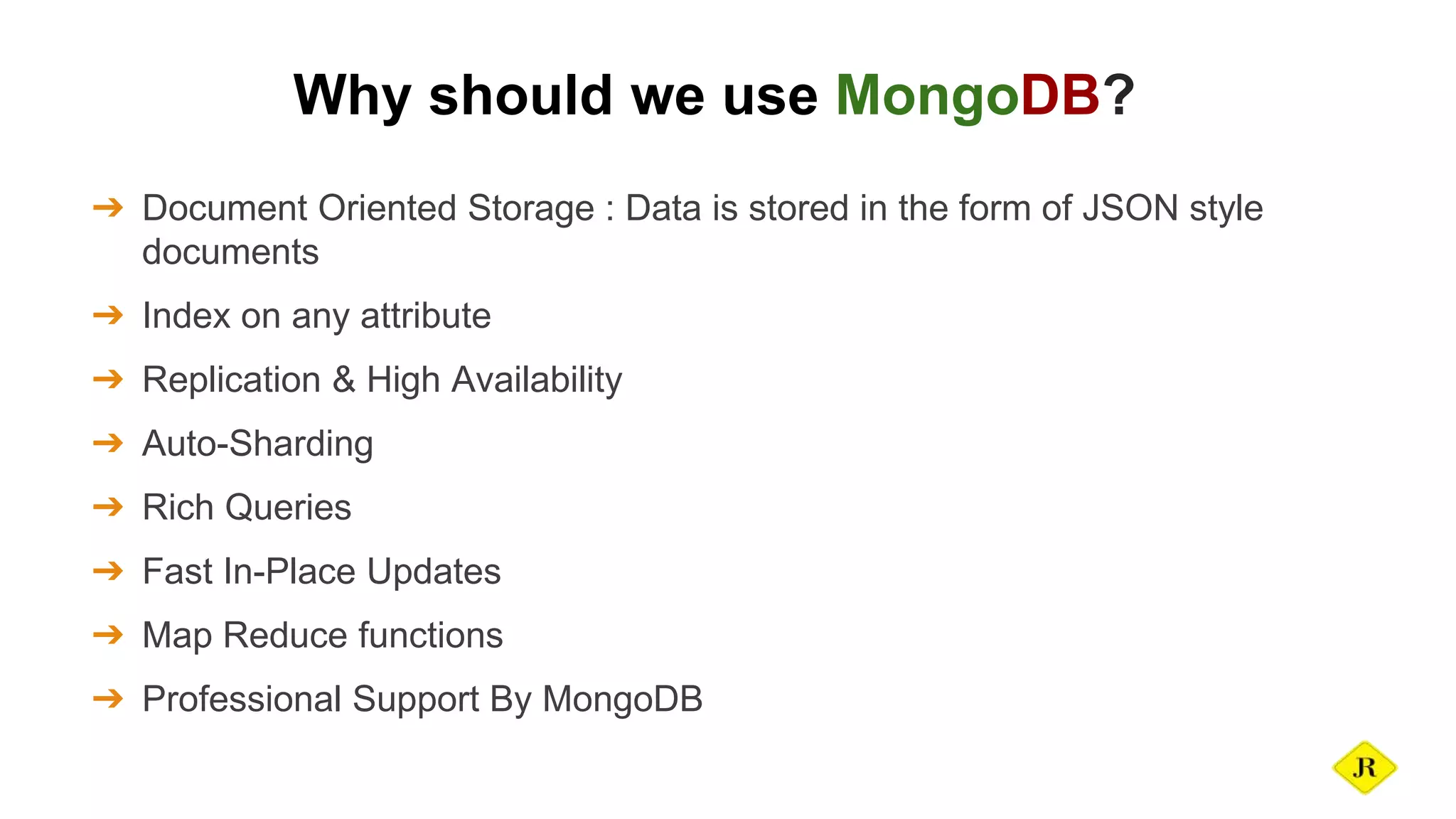
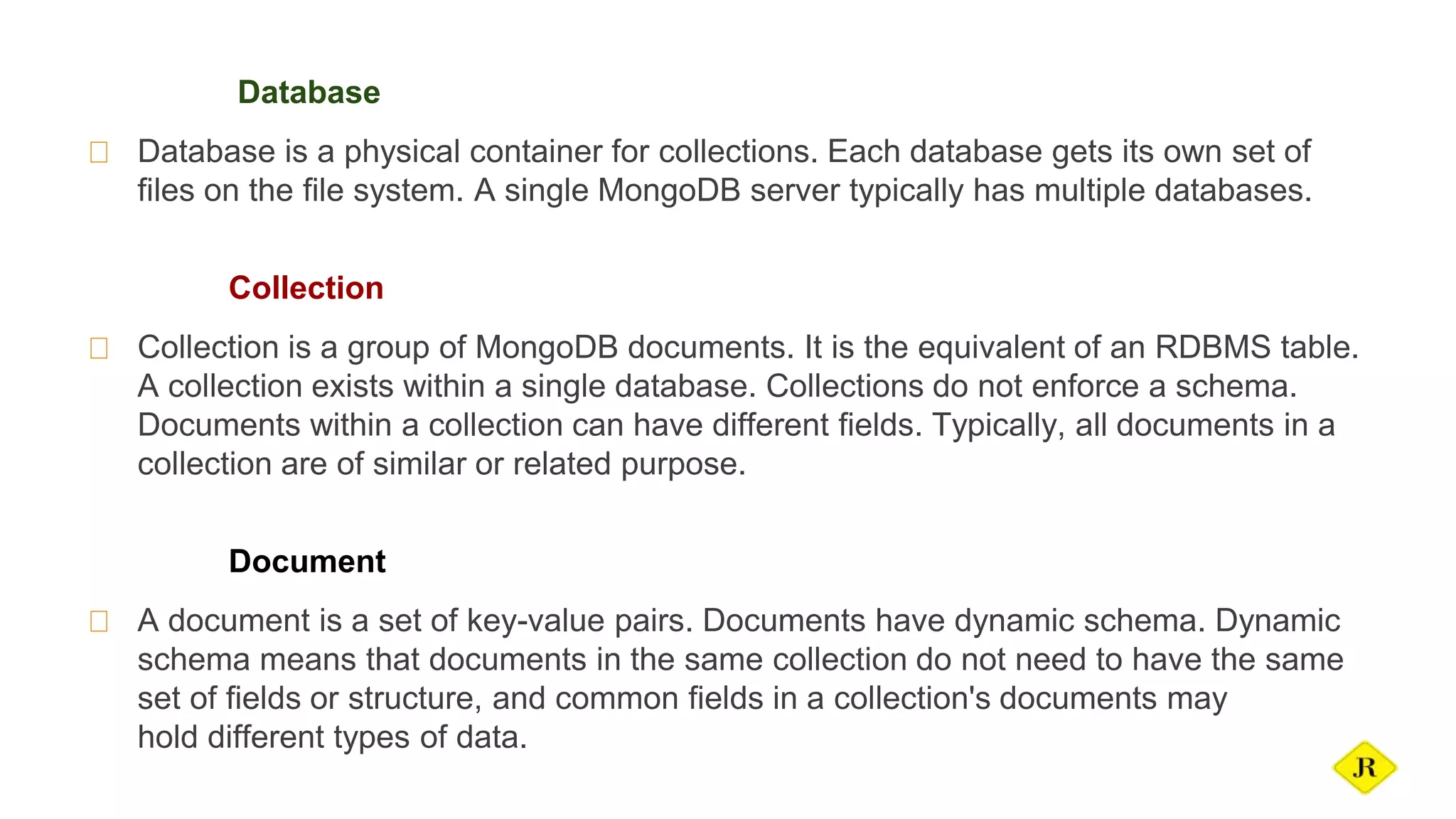
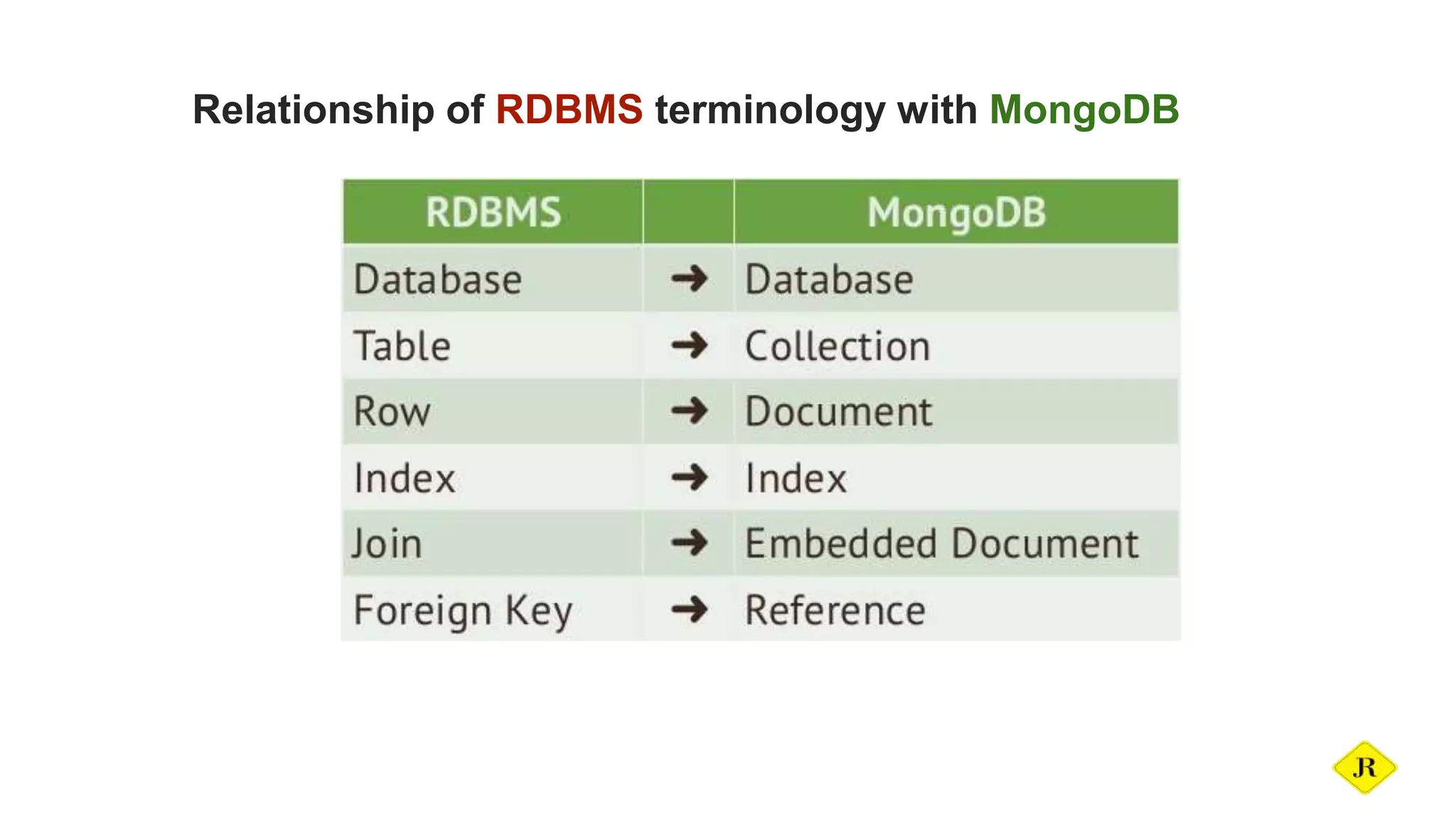
![Installation - yum 1.Create a repo file as below: vim /etc/yum.repos.d/mongodb.repo 2.For 64-bit systems type the below information in repo file and save. [mongodb-org-3.0] name=MongoDB 3.0 Repository baseurl=http://downloads-distro.mongodb.org/repo/redhat/os/x86_64/ gpgcheck=0 enabled=1](https://image.slidesharecdn.com/mongodbbasics-151103052557-lva1-app6891/75/MongoDB-basics-Introduction-7-2048.jpg)
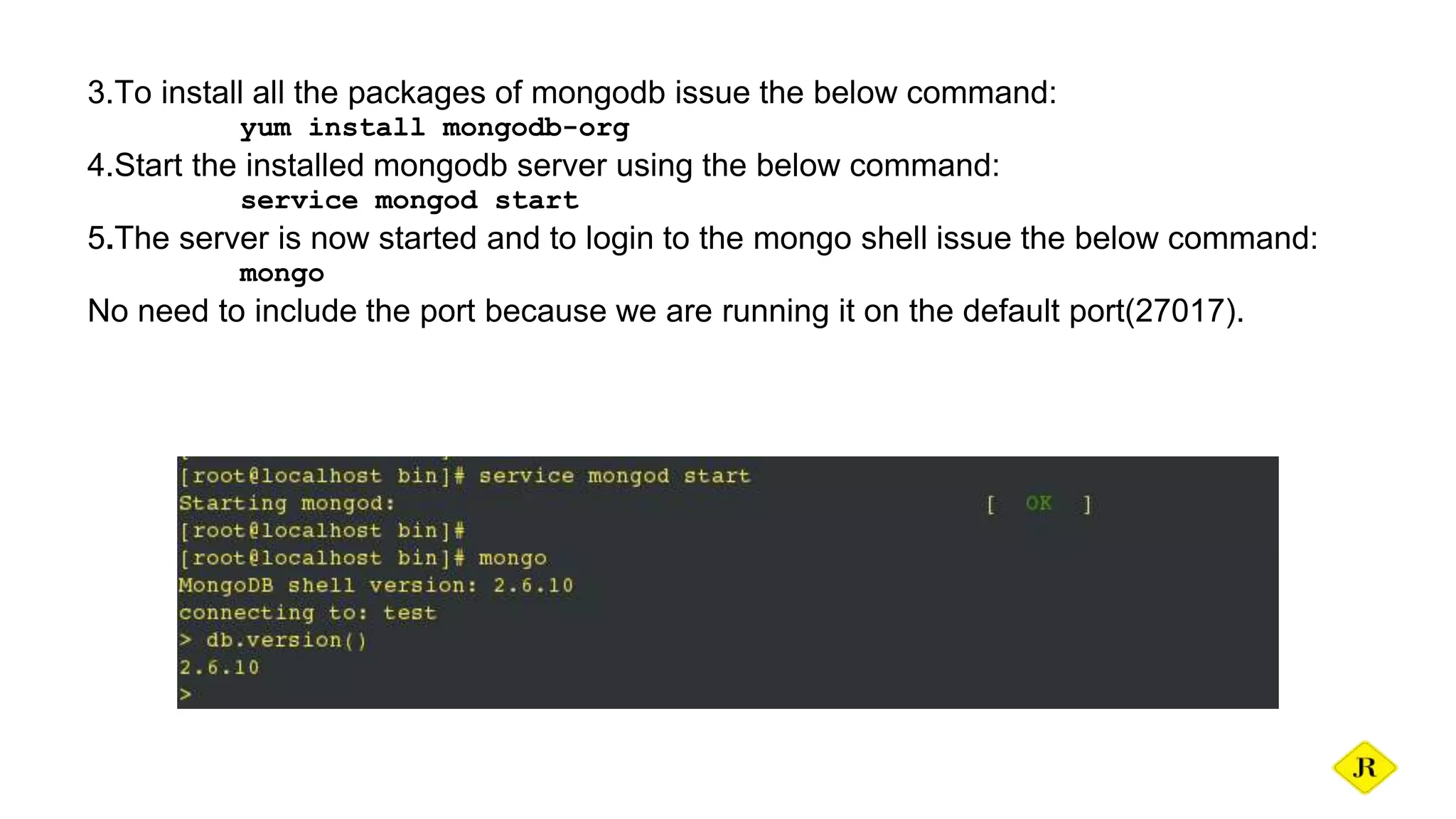
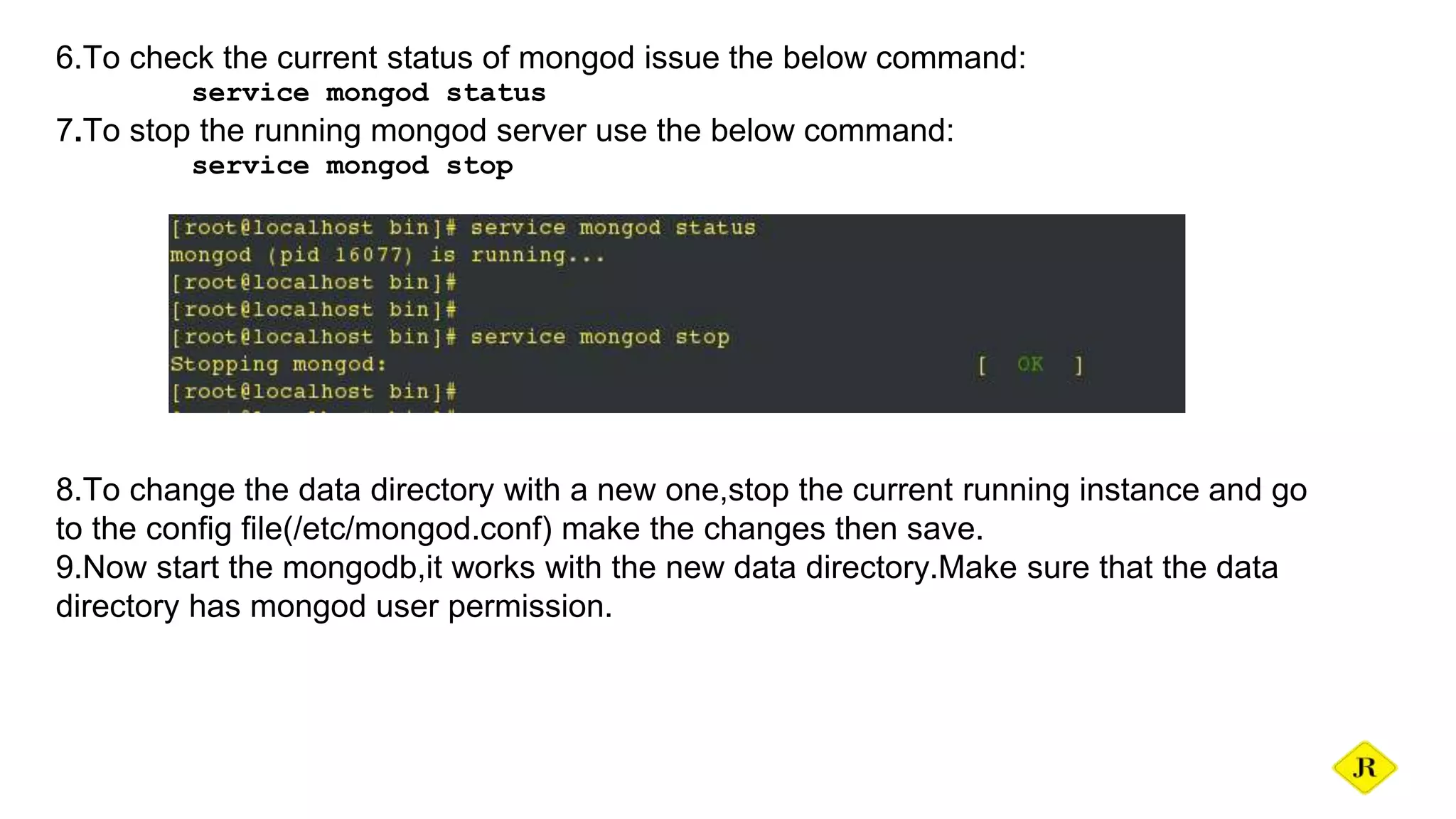
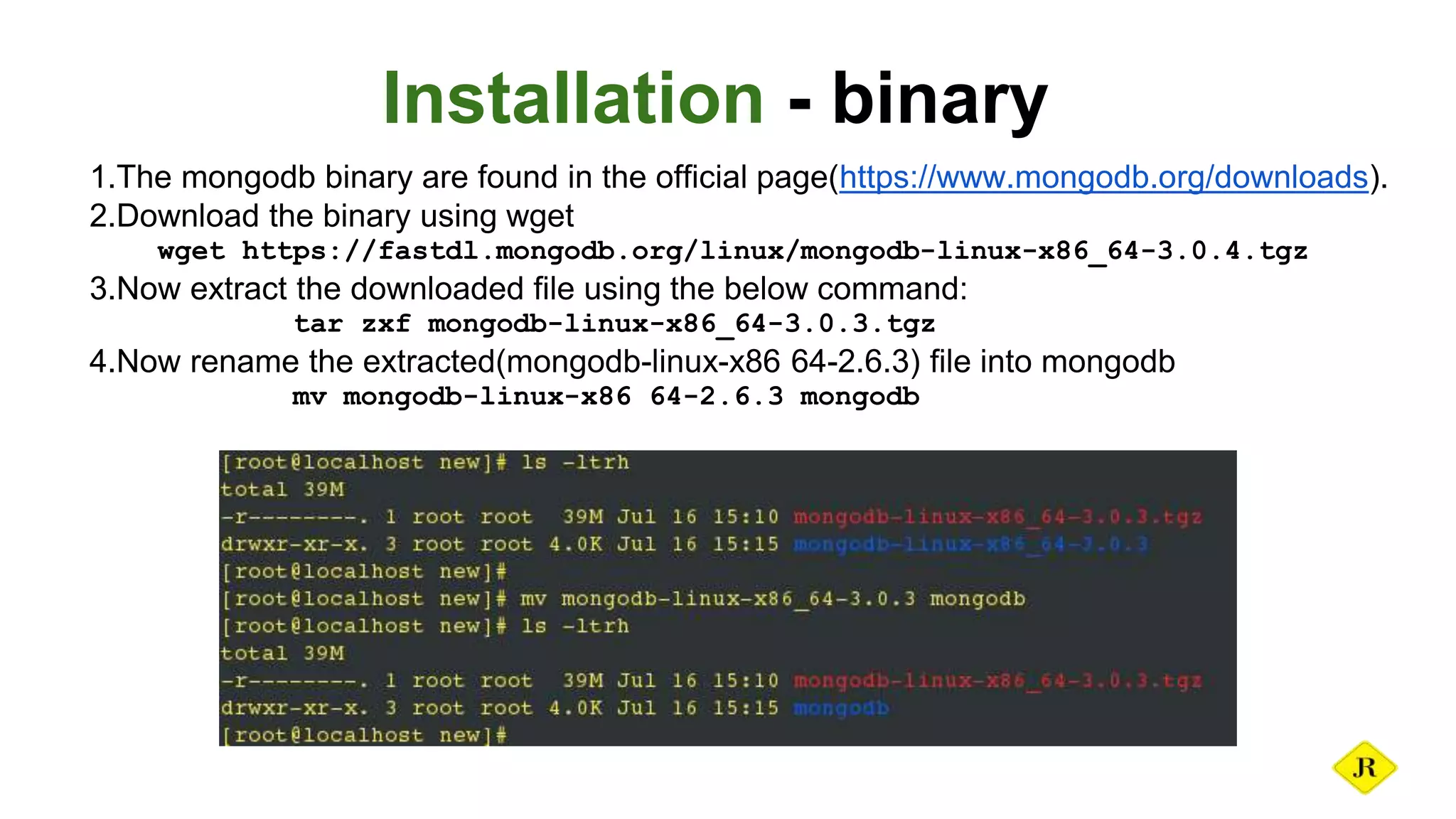
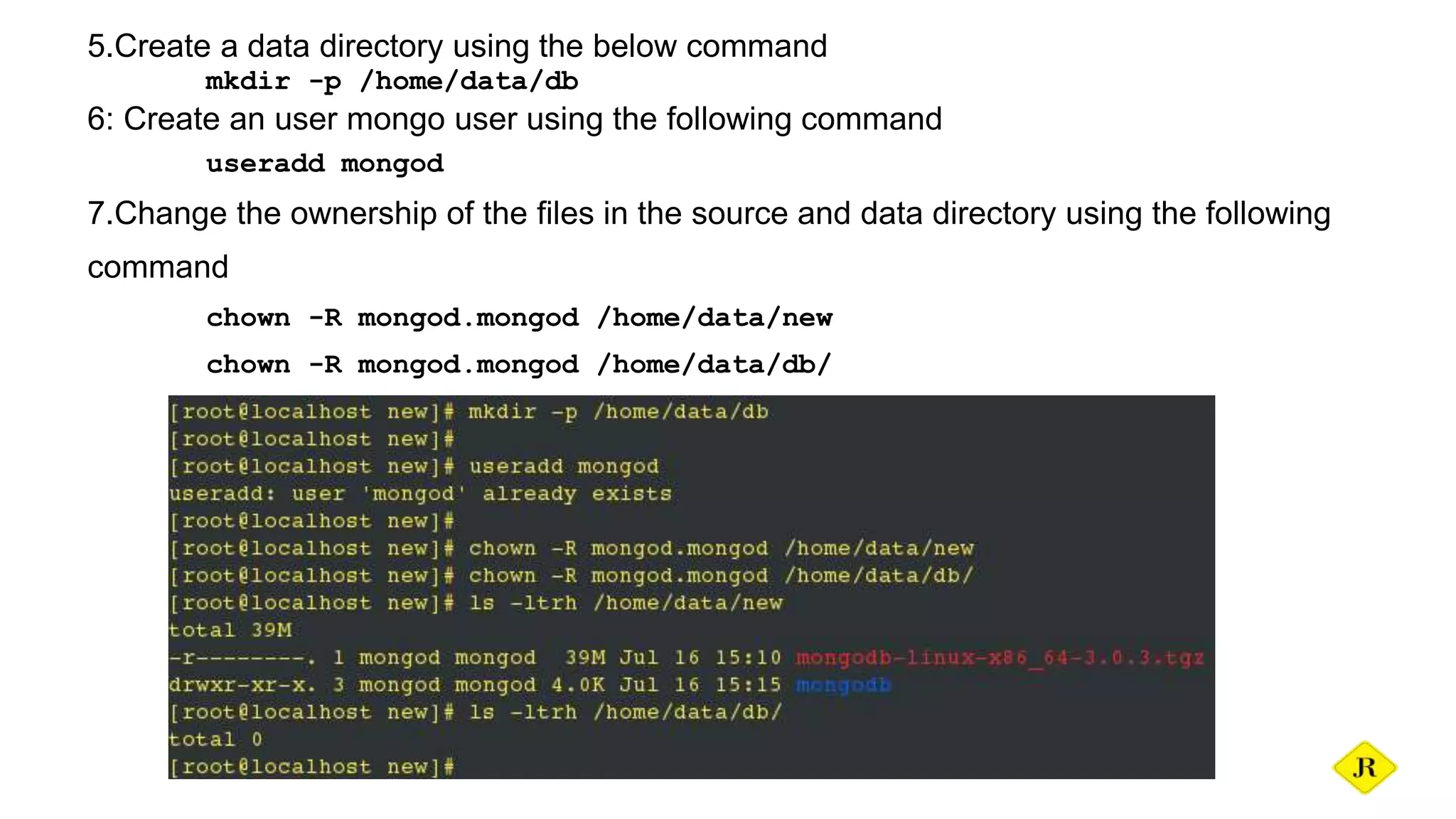
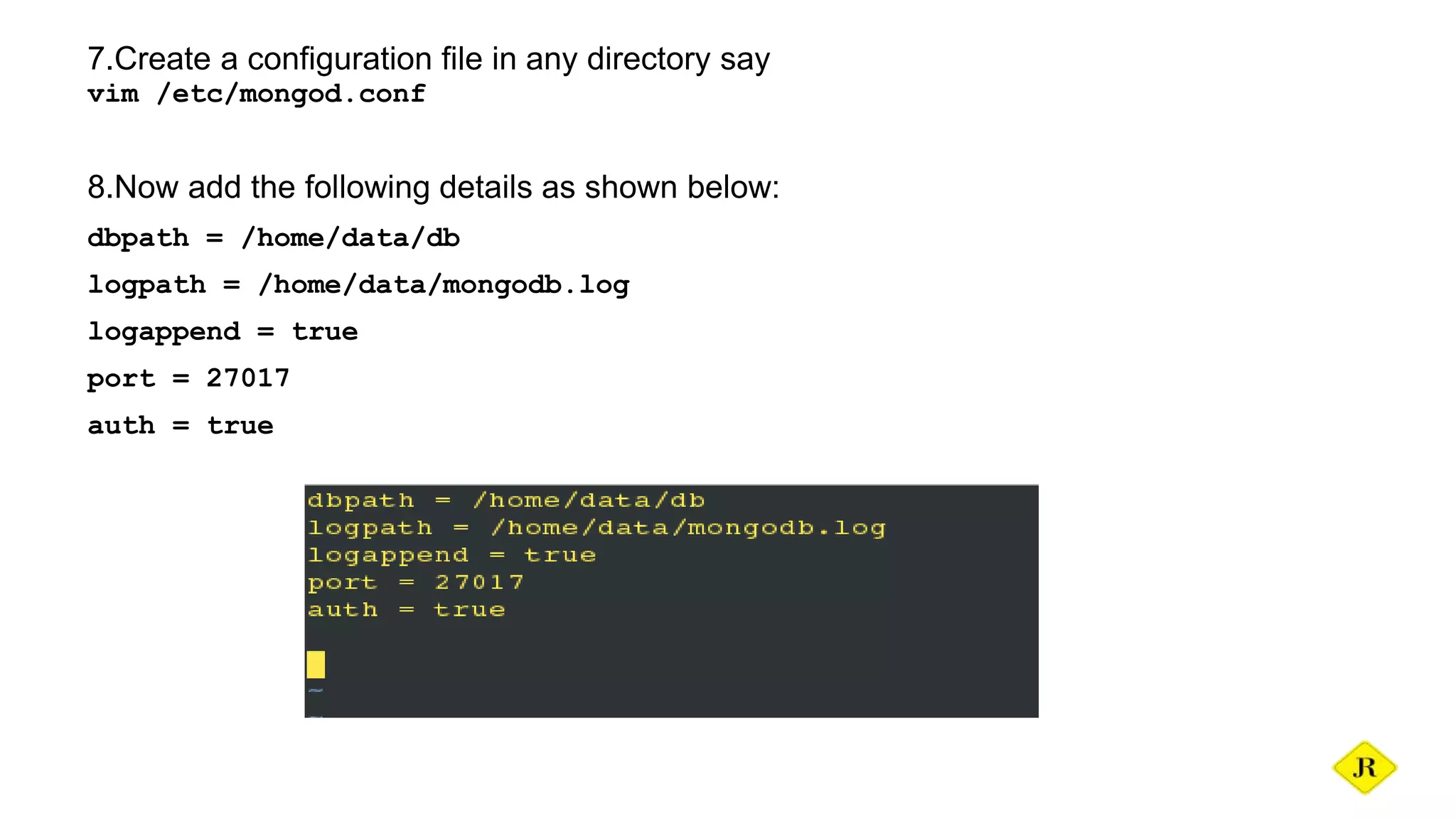
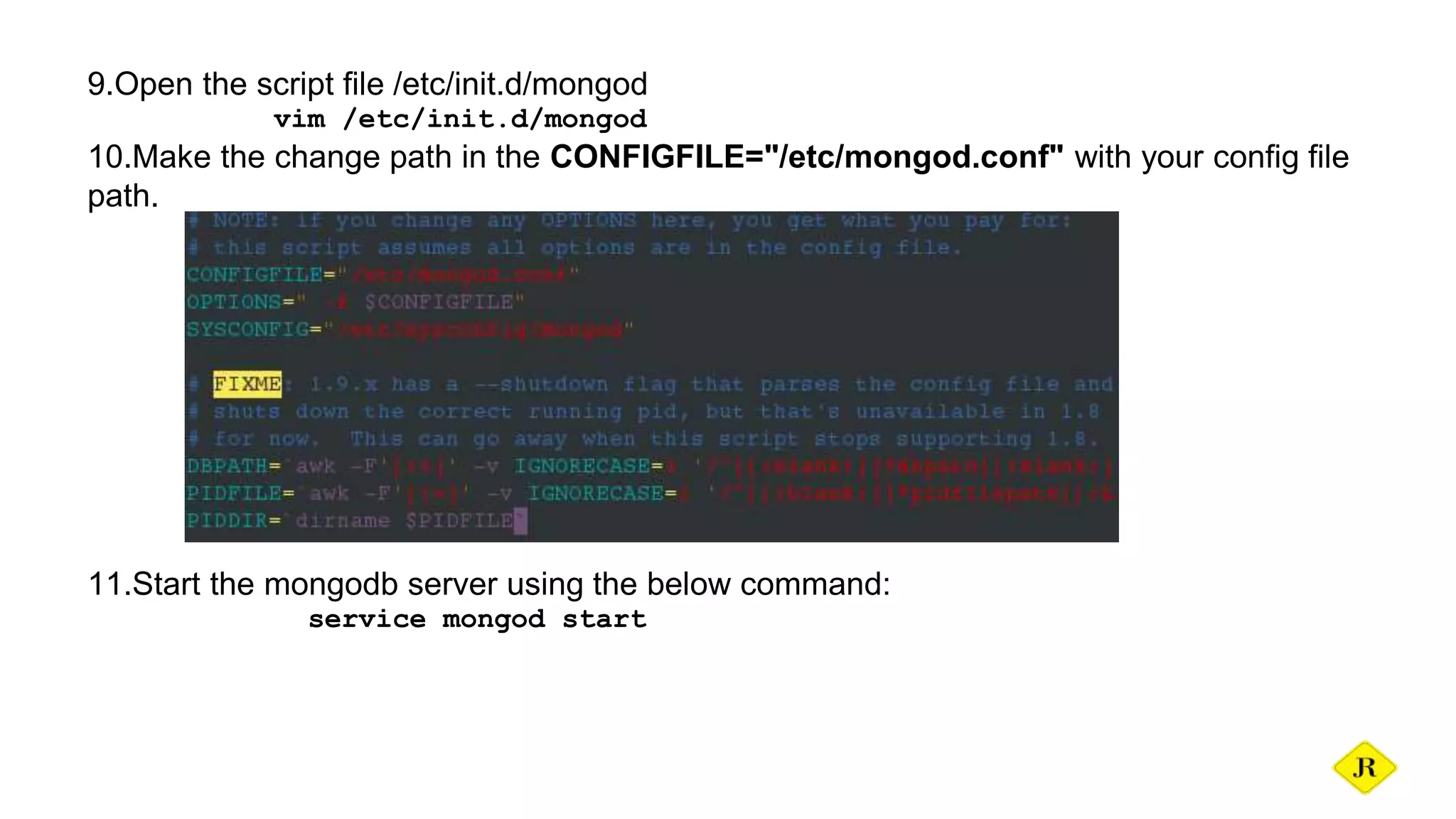
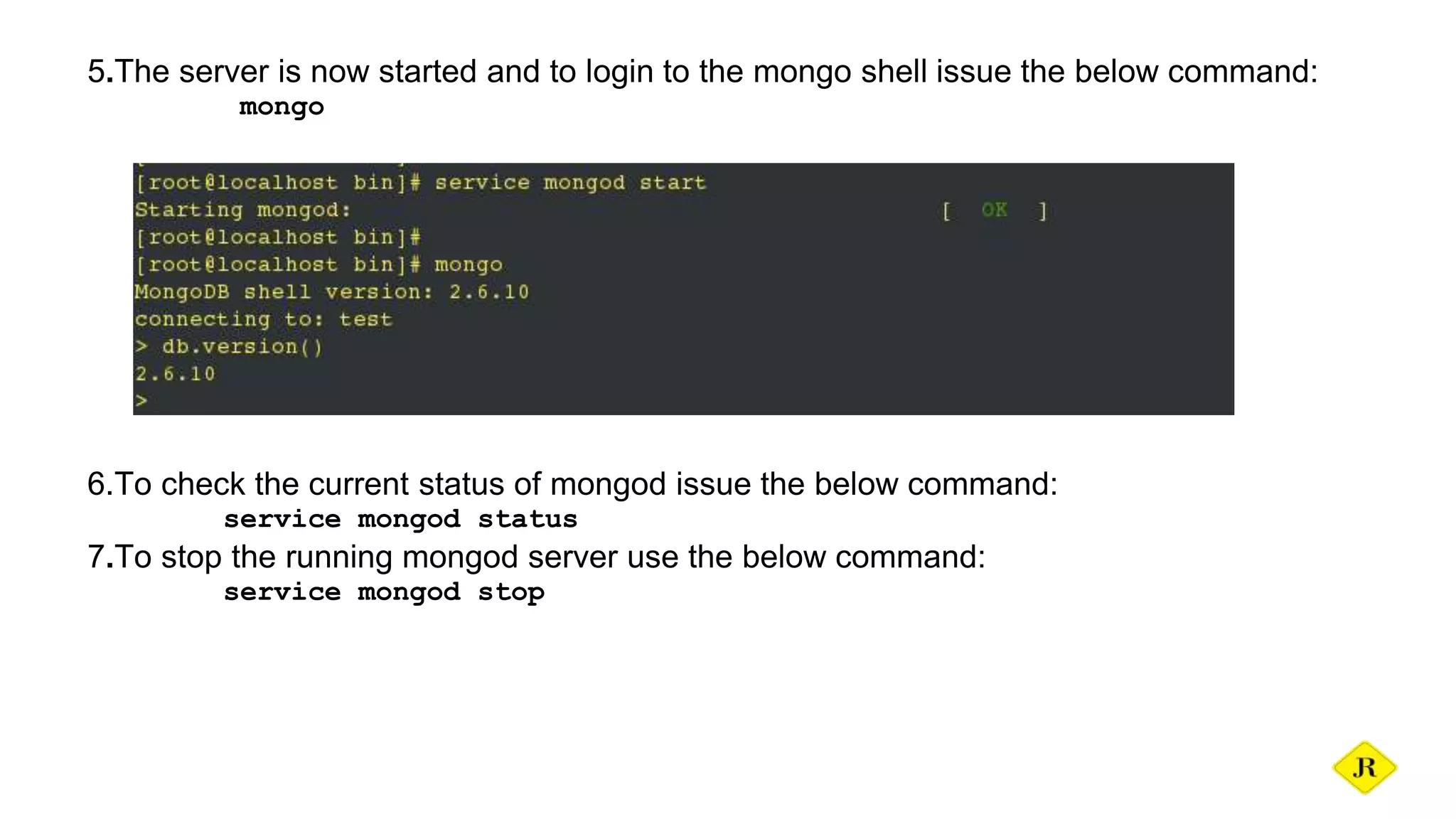
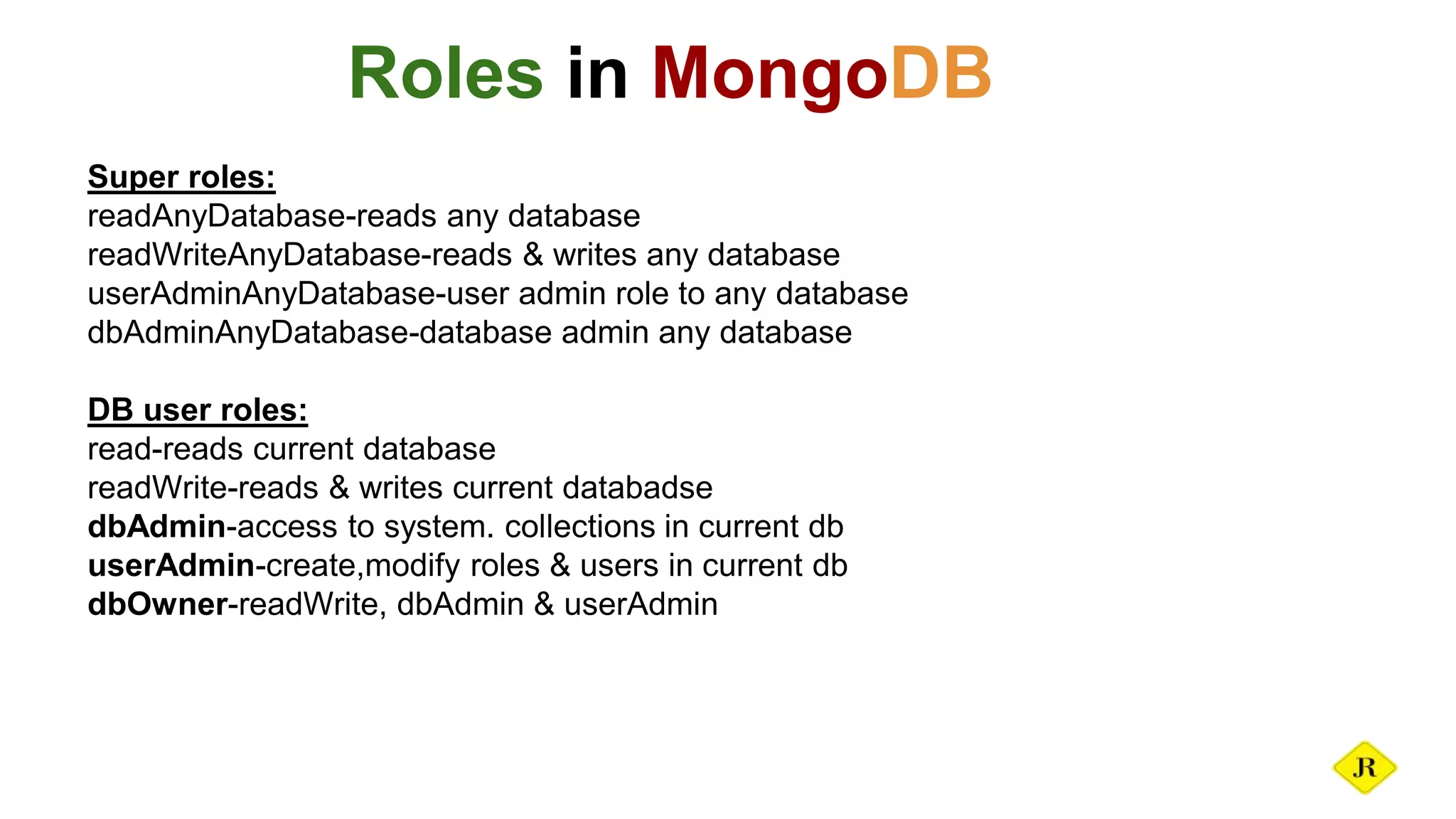
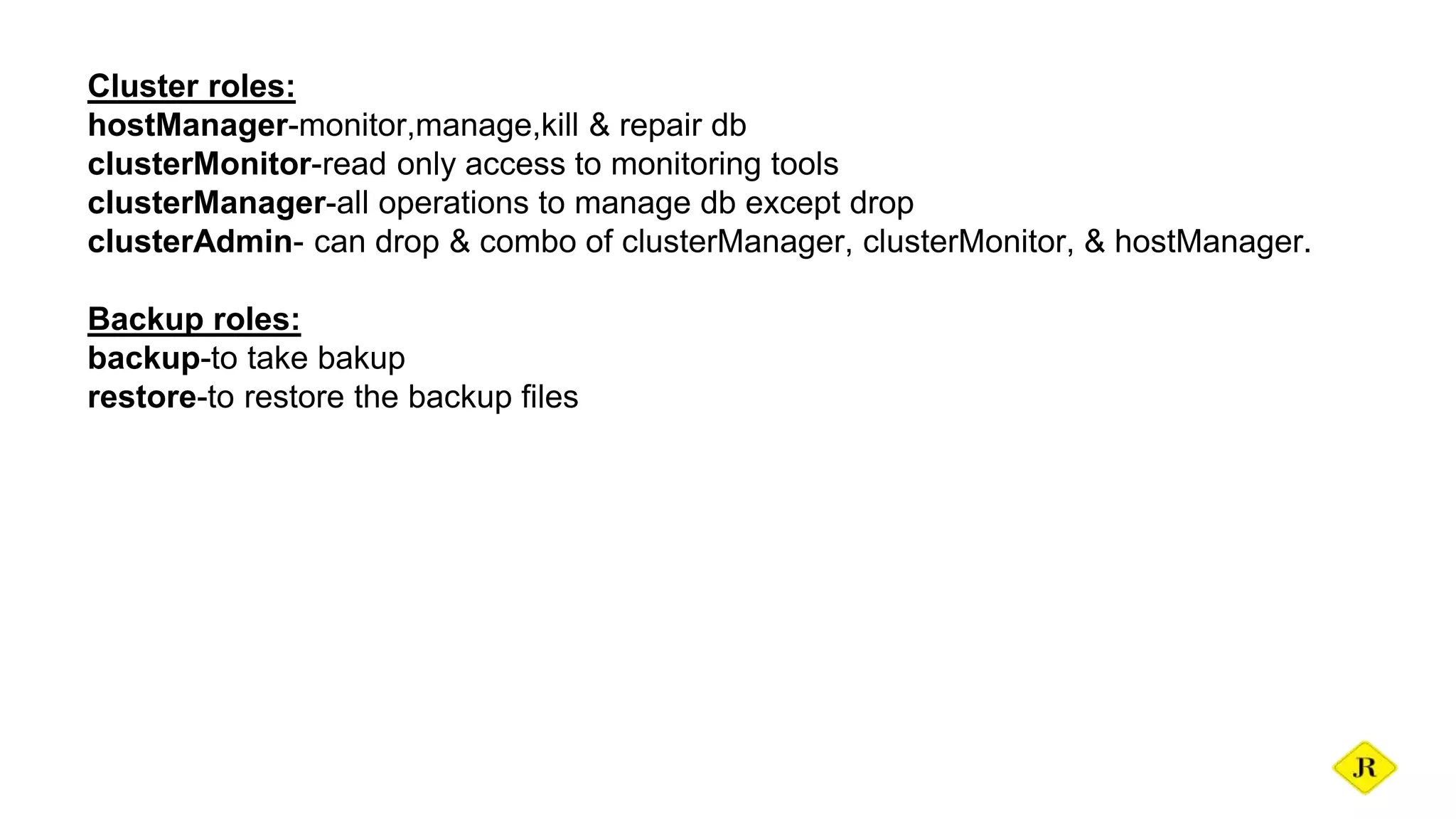
![Creating a user Root user: Provides access to the operations readWriteAnyDatabase, dbAdminAnyDatabase, userAdminAnyDatabase and clusterAdmin roles combined. It does not include any access to collections that begin with the system. prefix.Create admin users in the admin database so that they can access all dbs. use admin db.createUser( { user: “root", pwd: “rootabc", roles: [“root” ] } )](https://image.slidesharecdn.com/mongodbbasics-151103052557-lva1-app6891/75/MongoDB-basics-Introduction-17-2048.jpg)
![So after creating the user it is possible to login only with user beacuse we have enabled auth. super user: use admin db.createUser( { user: "superuser", pwd: "admin", roles: [ "userAdminAnyDatabase", "dbAdminAnyDatabase", "readWriteAnyDatabase" ] } )](https://image.slidesharecdn.com/mongodbbasics-151103052557-lva1-app6891/75/MongoDB-basics-Introduction-18-2048.jpg)
![Read user for a database: use database db.createUser( { user: "read", pwd: "password", roles: [ { role: "read", db: "database" } ] } )](https://image.slidesharecdn.com/mongodbbasics-151103052557-lva1-app6891/75/MongoDB-basics-Introduction-19-2048.jpg)
![monitoring user: For the monitoring this user serves best: db.createUser( { user: "monitoring", pwd: "abc123", roles: [ "clusterMonitor" ] } )](https://image.slidesharecdn.com/mongodbbasics-151103052557-lva1-app6891/75/MongoDB-basics-Introduction-20-2048.jpg)
